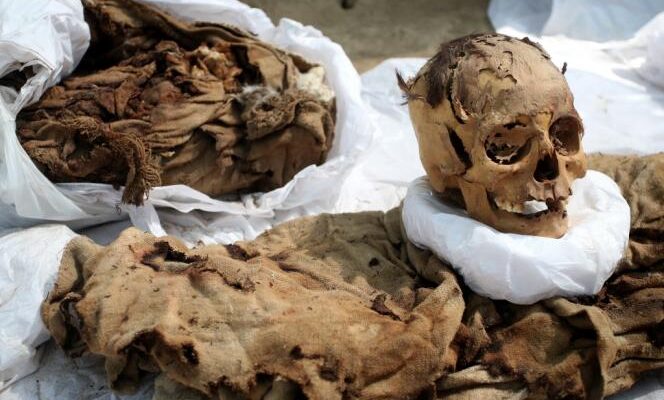LETTER FROM CUZCO
Police officers in the municipality of Puno, in southern Peru, probably did not expect such a discovery when, during a routine check in late February, they found a pre-Hispanic mummy aged “600 to 800 years” in an insulated bag. Its owner, a 26-year-old home delivery man, revealed that he was infatuated with the mummy, his “spiritual girlfriend”, whom he affectionately baptized “Juanita”kept in the family home for about thirty years.
Arrested, the man said that he intended to give it to a museum and not to send it to the black market. After analysis of the mummy, the latter should rather be called “Juan”, said the Peruvian Ministry of Culture. The body would indeed correspond to that of a 45-year-old man, measuring 1.51 m at the time.
The scene, comical, is nevertheless revealing of a scourge for Peru: the trafficking of cultural goods. With its rich pre-Hispanic past and its thousands of archaeological sites – some still to be discovered – the country is prone to looting and concealment of pre-Columbian objects and religious art as well as documentary archives from the colonial and republican era ( from the 16the in the 19the century).
objects that are “from thefts, in museums for example, but also from clandestine excavations of unprotected sites”, explains Evelyn Centurion, director of the Heritage Recovery office of the Ministry of Culture, in Lima. Among the pieces particularly sought after by European collectors”, we find in particular “historical documents, paintings of the Cuzquenian school [mouvement artistique catholique]ceramics from the Peruvian central coast, but also bone remains and textiles, such as coats paracas [une des civilisations les plus anciennes du Pérou, réputée pour la finesse de ses textiles] “.
Convictions are rare
In 2020, Katherine Muller Marin, director of the regional office for culture in Latin America and the Caribbean of Unesco, affirmed during a forum organized in Peru that ” this illicit trade has reached proportions as large as that of drugs or weapons [il se classe troisième au rang des trafics internationaux] “.
In April, a major seizure at the port of Callao, the country’s largest port north of Lima, illustrated the modus operandi and the impunity of the traffickers. Customs officers discovered objects from the Chimu culture (1000-1470) in a wooden chest: miniature statuettes, a carved wooden oar, textile production tools. The loot was part of a shipment presented as “furniture” in the context of a move by a man of Peruvian nationality to Germany. “Trafficking in cultural property often responds to global networks and art market demands. Objects sometimes pass through transit countries such as Argentina or Brazil,” precise Mme centurions. Trafficking, which involves looters, intermediaries, receivers, as well as collectors or art dealers, makes prosecution of the offense complex.
You have 45.6% of this article left to read. The following is for subscribers only.
